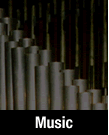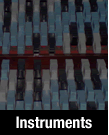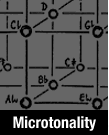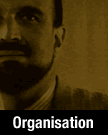
|
May 21, 2017 | Ere Lievonen, Fokker organ & several other performersConcert Fokker organ | 2017-05-21 - 11.00 hours | Small Hall - Muziekgebouw aan 't IJ, AmsterdamLaboratonium 2 An exciting concert with new works for 31-tone organ, laptop and electronics. The latest electronic possibilities are used to carry out musical experiments with the Fokker organ and the Carrillo piano. On the program the new composition Folding I for 31-tone organ by Charles Corey, who is the curator of Harry Partch instruments in Seattle. Besides this music, a work for Carrillo piano solo written by the Canadian composer Bruce Mather from Montréal will be performed. Also on the program Equilibrium for 31-tone organ and electronics by the Dutch composer Danny de Graan. And last but not least: a new work titled Kaiho (longing) for 96-tone piano by the known Finnish composer Juhani Nuorvala and the first 31-tone electronic piece (1957) by the great Dutch composer Ton de Leeuw. You can order tickets at the box office of the Muziekgebouw.
www.muziekgebouw.nl/agenda/Concerten/6997/_ >>>
Musicians Ere Lievonen, Fokker organ & Carrillo piano Anne Veinberg, Carrillo piano several performers, laptop
Program Charles Corey (1984) - Folding I (2017) premiere Bruce Mather (1939) - Etude II / Etude IV: flight of the bumblebee (from Huit études, 2000) Danny de Graan (1973) - Equilibrium (2009) Juhani Nuorvala (1961) - Kaiho (2017) premiere Ton de Leeuw (1926-1996) - Elektronische Studie (1957) Sander Germanus (1972) - Morpheus (2017) (canceled) Wouter Snoei (1977) - Bij heldere hemel (2015)
Charles Corey about his composition Folding IThis composition for Fokker organ is an extension of my previous work with tuning systems. In general, this piece follows my interest in exploring not only what each tuning system does well, but also what each system cannot do; this has been a focus of mine since 2008. More specifically, it expands upon an extended passage of strict canons from my 31-tone clarinet and bassoon duet entitled Tying the Gordian Knot. These canons imply a series of harmonies that I am able to fully realize on the Fokker organ, and utilize as structural elements to shape the rest of the work.
Bruce Mather about his compositie Huit études (in French)C'est à la demande de la pianiste française Martine Joste que j'ai écrit ces études et c'est elle qui les créées le 16 septembre 2001 à Heilbronn en Allemagne. La première étude "Guirlandes", s'inspire de la pièce pour piano du même nom de Scriabine. L'écriture est monodique avec un principe d'agrandissement ou de rétrécissement d'intervalles allant de un jusqu'à six siezièmes de ton. Entièrement harmonique, la deuxième étude utilise des petits intervalles dans l'aigu allant vers des intervalles plus grands dans le registre grave. À deux voix, la troisième étude est un canon par augmentation et par renversement, une voix étant en seizièmes de ton et l'autre en huitièmes de ton. La quatrième étude "Vol de bourdon" s'inspire de la pièce célèbre de Rimsky Korsakof mais on peut rendre le son du bourdon mieux avec des seizièmes de ton qu'aves des demi-tons. Toute cette étude se passe à l'intérieur d'une tierce mineure. La cinquième étude n'utilise que des intervalles de trois seizièmes de ton, donc à peu près des cinquièmes de ton. La sixième étude n'utilise que des "clusters", des grappes sonores en seizièmes, huitièmes, trois seizièmes ou quarts de ton. L'effet obtenu est celui de l'unison enrichi, timbré donc d'une monodie. La septième étude, "les accords classés", met en valeur les accords de trois sons, majeurs, mineurs, augmentés et diminués ainsi que leurs renversements avec des glissements par seizièmes de ton entre les accords. La huitième étude utilise des intervalles de cinq et six seizièmes de ton disposés en deux couches d'accords arpégés de trois sons, le tout se déplaçant par des glissements en seizièmes de ton. (Bruce Mather, 2000)
SupportThis concert is made possible by the support of: Prins Bernhard Cultuurfonds, Zabawas, Amsterdams Fonds voor de Kunst, Van de Berch van Heemstede Stichting, Hofsteestichting and Gemeente Amsterdam (district East). Also the Prins Bernhard Cultuurfonds (renovation Fokker organ), the SNS REAAL Fonds (renovation Fokker organ) and the Muziekgebouw aan 't IJ. Show our sponsors
|
Links |









